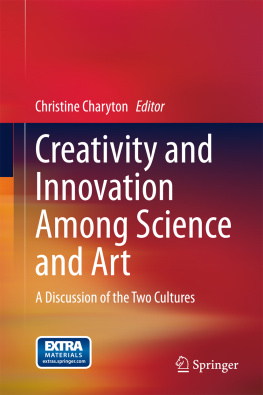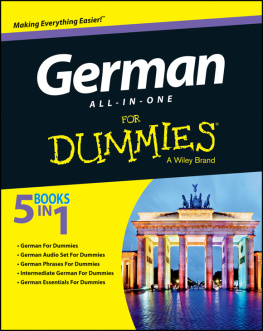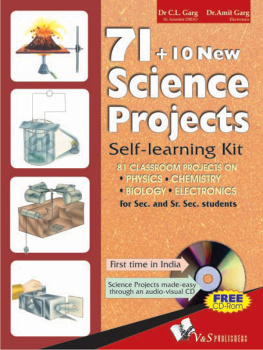COPYRIGHT 1907 BY CHARLES F. KROEH
HOBOKEN. N. J.
PUBLISHED BY THE AUTHOR.
PREFACE.
The aim of this Reader is not merely to afford the student a certain amount of experience in reading scientific German, but to attack the subject systematically. The selections are not chosen at random. They are arranged progressively and consist of fundamental definitions, descriptions, processes and problems of Arithmetic, Algebra, Geometry, Physics and Chemistry. These are linguistically the most important subjects for scientific and engineering students to read first, because they contain the terms and modes of expression which recur in all subsequent reading, and because they contain these terms in the simplest possible connections. A student who has mastered these pages will find no difficulty in reading any scientific German he may meet in his professional work.
A GERMAN SCIENCE READER.
1.
ARITHMETIK UND ALGEBRA.
Study carefully the notes (beginning page 97) to which the small numbers in the text refer.
Arithmetik ist ein Fremdwort, das auf deutsch Zahlenlehre bedeutet.
1 + 2 = 3 wird gelesen: eins und zwei (oder eins plus zwei) ist drei.
25 - 13 = 12 wird gelesen: 25 weniger (oder minus) 13 ist 12.
2 3 = 6 wird gelesen: 2 mal 3 ist 6.
72 6 = 12 wird gelesen: 72 dividiert durch 6 ist 12.
Alle Posten zusammengenommen sind der Summe gleich.
Die Differenz kann als diejenige Zahl betrachtet werden, welche brig bleibt, wenn man den Subtrahend vom Minuend wegnimmt; oder als diejenige Zahl, welche man zum Subtrahend addieren muss, um den Minuend zu erhalten; oder auch als diejenige Zahl, welche man vom Minuend abziehen muss, um den Subtrahend zu erhalten.
Besteht eine Zahl aus zwei Faktoren, so ist der eine Faktor gleich dem Produkt dividiert durch den anderen Faktor.
Der Divisor ist die teilende, der Dividend die zu teilende Zahl.
Der Quotient ist gleich dem Dividend, wenn man denselben durch den Divisor dividiert.
Der Dividend ist ein Produkt aus dem Quotienten und dem Divisor.
Wievielmal grsser man den Dividend macht, sovielmal grsser wird dadurch auch der Quotient.
Multipliziert man den Dividend und ebenso den Divisor mit einer und derselben Zahl, so bleibt der Quotient unverndert.
Je kleiner man den Divisor macht, desto grsser wird der Quotient.
Um einen n mal grsseren Quotienten zu erhalten, kann man entweder den Dividenden n mal grsser oder aber5 den Divisor n mal kleiner machen.
Brche. In je mehr Teile ein bestimmtes Ganzes geteilt wird, desto kleiner werden die Teile.
Je grsser der Zhler eines Bruches bei gleichem Nenner ist, desto grsser ist sein Wert.
Um einen Bruch seinem Werte nach n mal kleiner zu erhalten, kann man entweder einen Zhler durch n dividieren oder seinen Nenner mit n multiplizieren.
Wird eine Zahl mit 10 multipliziert, so erhlt jede Art der Einheiten derselben den zehnfachen frheren Wert, und daher den Namen der nchst hheren Art von Einheiten.
Schriftlich man jede Ziffer in die nchst hhere Stelle rckt, welches dadurch bewirkt wird, dass man das Dezimalzeichen um eine Stelle von der Linken gegen die Rechte rckt.
Ist die Zahl eine ganze Zahl, so wird die dadurch leer werdende Stelle der Einer mit einer Null ausgefllt.
Um einen gegebenen Dezimalbruch mit einer ganzen Zahl zu multiplizieren, betrachte man ihn als eine ganze Zahl und schneide sodann vom Produkte soviele Dezimalstellen ab, als deren der gegebene Dezimalbruch enthlt.
2.
Eine Zahl enthlt den Faktor 9 und ist daher durch 9 teilbar, wenn die Quersumme der Ziffern, mit welcher die Zahl geschrieben wird, durch 9 teilbar ist.
Eine Zahl enthlt den Faktor 11 und ist also von 11 betrgt.
Nur Brche mit gleichen Nennern knnen addiert und subtrahiert werden.
Gleichnamige Brche werden addiert, indem man ihre Zhler addiert.
Brche mit ungleichen Nennern werden addiert oder subtrahiert, indem man sie zuerst in Brche mit gleichen Nennern verwandelt, und diese sodann addiert oder subtrahiert.
Man zerlege die Nenner der gegebenen Brche in ihre Grundfaktoren, d. h. in ihre kleinsten Faktoren.
Man nehme aus der Reihe dieser Grundfaktoren zur Bildung des gemeinschaftlichen Nenners so viele als zur Darstellung jedes einzelnen Nenners, an und fr sich betrachtet, ntig sind.
Aus den auf diese Weise ausgewhlten Grundfaktoren bildet man sodann ein Produkt; dieses ist alsdann der kleinste gemeinschaftliche Nenner.
Unter Brchen von gleichen Nennern und ungleichen Zhlern ist derjenige der grssere und beziehungsweise der grsste, welcher den grsseren bezw. den grssten Zhler hat, und umgekehrt; und zwar: wievielmal grsser oder kleiner der Zhler eines Bruches als der Zhler eines anderen Bruches ist, sovielmal grsser oder kleiner ist auch der Wert des einen als der Wert des anderen Bruches.
Ein Bruch wird mit einer ganzen Zahl multipliziert, entweder (a) indem man den Zhler mit der ganzen Zahl multipliziert; oder (b) indem man den Nenner durch die ganze Zahl dividiert.
Ein Bruch wird durch einen andern Bruch dividiert, indem man den Disivor umkehrt, (d. h. indem man dessen Nenner zum Zhler macht) und alsdann mit demselben multipliziert.
Das Verfahren, den grssten gemeinschaftlichen Faktor zweier Zahlen zu finden, besteht darin Zahlen ist.
Man findet das vierte Glied einer geometrischen Proportion, indem man das Produkt des zweiten und dritten Gliedes durch das erste Glied dividiert.
Das Produkt der usseren Glieder ist gleich dem Produkt der inneren Glieder. Das erste Hinterglied, wie das zweite Hinterglied zum zweiten Vorderglied.
Eine Progression heisst steigend, wenn jedes folgende Glied derselben grsser; fallend, wenn jedes folgende Glied kleiner ist als das vorhergehende.
3.
AUFGABEN.
1. Die Zahl 5 soll, b) in den Kubus, c) ins Biquadrat, d) in die fnfte Potenz.
2. Aus 64 soll ausgezogen werden: a) die Quadratwurzel, b) die Kubikwurzel.
3. Bei einem Geschfte verdienen 5 Arbeiter in 42 Tagen bei 8stndiger Arbeit $210. Was wrden 9 Arbeiter in 35 Tagen bei 10stndiger Arbeit verdienen?









